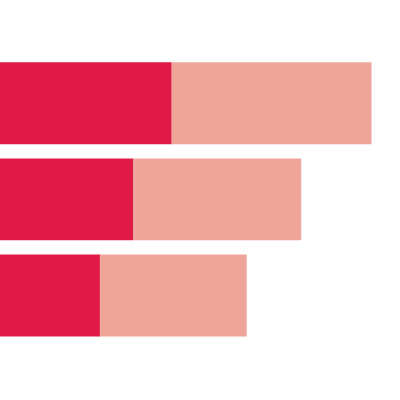Relationship between health and number of housing problems
19 April 2021

- Nearly one in three household heads (32%) living in homes with multiple problems relating to overcrowding, affordability, and non-decent conditions have rated their health as less than good, compared with 20% of those households with none of these housing problems.
This chart shows the proportion of people that rated their health as less than good (in a range of very good, good, fair, bad or very bad) dependent on whether they live in a home with no, one or multiple housing problems in England for 2012/13. The housing problems considered are affordability, overcrowding and whether the home is classed as non-decent.
Non-decent homes are those homes with a hazard of immediate threat to a person’s health, not in a reasonable state of repair, lacking modern facilities or not effectively insulated or heated. Overcrowding is defined as a household with more people than there are appropriate rooms and is based on age, sex and the relationship status of the occupants. Housing is classed as unaffordable if the household is spending more than a third of their net income (net of housing benefit) on housing costs.
A total of 32% of those with multiple housing problems reported their health to be less than good, compared with 21% of those with no housing problems. The overall percentage difference between those with multiple housing problems and those with no housing problems reporting poor health is 11%.
The proportion of people rating their health as bad or very bad is twice that of those experiencing housing problems (10%), compared with those experiencing no housing problems (5%).
Non-decent homes include problems such as damp and cold, which can directly harm health. Overcrowding and poor affordability can influence mental health and act as a source of stress. Experiencing more than one of these problems risks further harm to health.
Housing conditions can affect health, with those experiencing one or multiple housing problems more likely to be in poorer health. Around one million households in England experience multiple housing problems and these households should be a priority for policy intervention.
- Non-decent homes have been defined by the Ministry of Housing, Communities & Local Government as homes with a Category 1 hazard – as assessed by the Housing Health and Safety Rating System (HHSRS) – that are not in a reasonable state of repair, lack reasonably modern facilities or do not provide a reasonable degree of thermal comfort.
- Overcrowding is measured by comparing household members against a bedroom standard. This standard allows for room allocation based on the relationship status of adults in the household, and the age and sex of the children.
- Unaffordable housing is where more than a third (33%) of net household income (net of housing benefit) is spent on housing costs.
- Less than good self-rated health is defined as those who rate their health as fair, bad or very bad.
Source: Ministry of Housing, Communities & Local Government, English Housing Survey. Data are for 2012/13.







